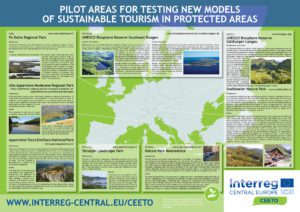Sustainable Tourism Management in the Post-Pandemic Reality
Source: Pixabay
Since the coronavirus pandemic restricted the usual international and tourism-related movements of people, many parks and Protected Areas have been facing an increased influx of visitors. On the one hand, the situation represents an opportunity to raise awareness about Protected Area issues, on the other hand, it brings significant challenges for the Protected Area managers – especially in keeping the tourism activities sustainable.
The uncertainty brought by the COVID-19 outbreak in spring forced many European Parks and Protected Areas to adapt and come up with plans to ensure some continuity of their services, safety measures and new operational procedures.
We collected several examples of measures that Parks across Europe developed and put in place in the past weeks and months…
Parks’ Communication
In an effort to ensure that all the new guidelines and other changes are acknowledged by the visitors, Protected Areas had to communicate effectively. The Cairngorms National Park in Scotland published a short instructional video urging tourists to follow the rules to stay safe, and to protect both other visitors and nature.
In a recent newsletter, France Nature Environnement published an article with tips on how to interact with nature after the lockdown and avoid involuntary damage to wildlife which have spread out during confinement.
Compliance rules, Procedures and Enforcement
In Italy, an Anti-contagion protocol for excursions in protected natural areas was prepared by Federparchi with the consultancy of directors, the RomaNatura body and in collaboration with Campus Bio Medico University of Rome. The handbook develops a special protocol for guided visits in protected natural areas and includes the following fundamental points:
- online reservations required as prerequisite for access to guided tours;
- disposable masks and gloves to be used indoors and where necessary;
- body temperature detection at the meeting points of the Visitor Centers;
- groups of up to twelve people with social distance up to two meters, and
- additional protection devices for the guides to be used in case of need.
EUROPARC is still seeking to collect and collate new practice across Europe in order to share and assist members who are having to think this through and develop new operational procedures.
If you have any comments or concerns about what might change in your park in the post COVID world, please feel free to send us an email at europarc@europarc.org!
The CEETO Project – A Reference for Sustainable Tourism Management
Aside from the extensive work carried out by the European Charter for Sustainable Tourism in Protected Areas for about 25 years, other initiatives have taken a step forward in the development of Sustainable Tourism management in our continent. In this line of action and after three years of extensive work, the recently finished CEETO project has become a major reference.
The CEETO project, in which EUROPARC Federation was an active partner, has strived to analyse, design and test new Sustainable Tourism governance models in eight Pilot Protected Areas of Europe and developed a set of outputs that will undoubtedly be of help to support the work of Protected Area managers in Europe:
The Handbook on Successful – Innovative Practices in Europe
This document offers a knowledge basis compiling some of the most successful stories, existing management and monitoring tools and lessons learned across Europe and worldwide about sustainable tourism practices in Protected Areas.
Download the CEETO Handbook. It is available in English, German, Croatian, Hungarian, Italian and Slovenian version!
The Guidelines for a Sustainable Tourism in Protected Areas
The Guidelines were designed as a tool to support policy makers at international, national and regional level in the process of shaping the tourism planning and management within and around Protected Areas. Their main objective is to facilitate the integration of nature conservation, sustainability criteria and principles for concrete environmental and socio-economic benefits into the design process of these plans.
Watch this introductory video and download the CEETO Guidelines. The document is available in English, Slovenian and Italian.
The Manual of Sustainable Tourism governance for Protected Area managers
The last output of CEETO project, the Manual, is an operational document intended for both Protected Area managers and local stakeholders to help them to implement Sustainable Tourism strategies in Prortected Areas. It is based on the experience of eight Protected Areas in Austria, Croatia, Germany, Italy and Slovenia that tested various governance models for stakeholders engagement and monitoring tools of visitors flow, aimed at reducing environmental impacts and pressures of tourism and enhance the socio-economic benefits that can come from a Sustainable Tourism approach.
Download the CEETO Manual, available in English, Italian and Slovenian.
You can find a short video teaser from each of the Pilot Protected Areas by clicking on their descriptions. Here is one from the Biosphere Reserve Salzburger Lungau in Austria:
Additionally, the CEETO project created a network of partners that aims to endure after the project closure: the CEETO network. This network, which is articulated through an online platform, it is formed by practitioners in nature conservation and Sustainable Tourism in Europe that share a common goal: to valorise natural heritage, to contribute to its conservation, and to achieve well-being of local communities through the appropriate management of tourism. The CEETO network is open for new members.
Further information on the main CEETO project outputs can be found on the CEETO Final Conference webpage, an event that gathered more than 200 professionals on Sustainable Tourism and in which the main aspects of the project were presented and discussed, or at the two CEETO webinars that were hosted during the project. Additionally, a summary of the main project results can be found at the CEETO Brochure.




